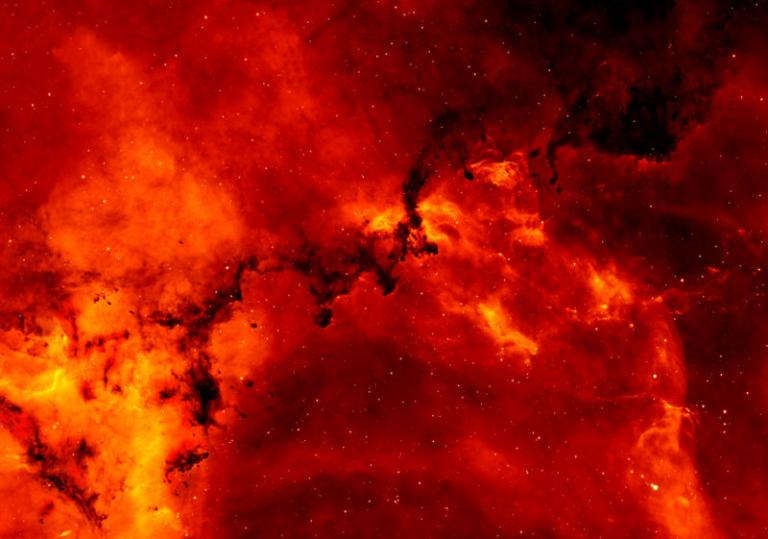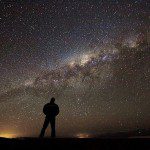
Yesterday, I posted a brief preliminary note inspired by and drawing upon Michael Guillen’s Believing is Seeing: A Physicist Explains How Science Shattered His Atheism and Revealed the Necessity of Faith (Carol Stream, IL: Tyndale Refresh, 2021). It concerned the modern collapse of confidence in the “certainty” of mathematics and logic, which have surely seemed the most certain of all human intellectual pursuits. But I didn’t finish my note, and so I continue it here.
This is Michael Guillen himself speaking, summarizing the implications of Kurt Gödel’s famous (infamous?) “incompleteness theorem,” which was mentioned in yesterday’s blog entry:
Whenever you try thinking logically about a complicated subject, one of two things will always happen:
Possibility #1: You’ll say and believe something that’s genuinely true, but you’ll never be able to prove it. No matter how hard you try, logic will fail you because logic is not powerful enough to do the job.
The late Swiss-American logician Verena Huber-Dyson put it this way: “There is more to truth than can be caught by proof.” I prefer simply saying, Truth is bigger than proof.
Possibility #2: You’ll prove something is true using seemingly air-tight logic; but in fact, it’s not so. Even though your logic seems rigorous, it isn’t; it’s riddled with stealthy paradoxes.
As Morris Kline, the renowned American mathematician, wrote in his textbook Mathematics for the Nonmathematician, “Logic is the art of going wrong with confidence.” (112)
Bertrand Russell had spotted a lethal logical error in the first pages of Gottlob Frege’s massive Grundgesetze der Arithmetik and, now, Kurt Gödel had identified an even more fundamental error, not only in Bertrand Russell’s (and Alfred North Whitehead’s) similarly ambitious Principia Mathematica but at the foundation of mathematics and logic themselves.
“I wanted certainty in the kind of way in which people want religious faith,” the vocally and famously atheistic Russell mourned late in his life in Portraits from Memory. “I thought that certainty is more likely to be found in mathematics than elsewhere. But . . . after some twenty years of very arduous toil, I came to the conclusion that there was nothing more that I could do in the way of making mathematical knowledge indubitable.” (113)
What are the implications? Guillen mentions three:
- Kurt Gödel’s work seriously undermines attempts to find an overarching “theory of everything” — for example, the “grand unified theory” that would pull together a single coherent explanation of the four fundamental forces of nature (gravity, electromagnetism, the “strong force,” and the “weak force”), that would reconcile relativity with quantum theory — that some have described as the “holy grail” of physics. Albert Einstein devoted his last years to a pursuit of such a “theory of everything,” but he failed in frustration. Gödel’s incompleteness theorem suggests that, if logic lacks the power to describe arithmetic, it may also not possess the power to exhaustively and self-consistently describe the entire universe.
- Gödel’s theorem easily allows for the possibility that the proposition “God exists” might be both true and, at the same time, impossible to prove by logic alone. (“Truth is bigger than proof.”) If logic can’t finally account for arithmetic, the ultimate question of God may well elude it as well.
- Mathematics itself, once thought the most certain of human disciplines, requires faith in axioms that are not only unproven but, ultimately, unprovable.
Guillen closes this portion of his discussion by citing John Barrow, an eminent mathematician at the University of Cambridge in the United Kingdom, from his book The Artful Universe:
If a ‘religion’ is defined to be a system of ideas that contains unprovable statements, then Gödel taught us that mathematics is not only a religion, it is the only religion that can prove itself to be one. (114)
Guillen then goes on to discuss “faith in axioms.” He notes that Aristotle’s logic and Euclid’s geometry, two of the greatest intellectual achievements of the ancient world, achievements that are still rightly influential even today, rest on axioms that can reasonably be rejected.
That is why, today, there are non-Aristotelian logics such as “three-valued logic” (in which x can be true or false or unknown) and “four-valued logic” (in which x can be true, or false, or true and false, or unknown), and so-called “fuzzy logic” (with an infinite number of truth values). (Despite its silly name, “fuzzy logic” has practical, real-world applications, even in such familiar things as antilock brakes.)
And that is why there are non-Euclidian geometries (e.g., spherical geometries, hyperbolic geometries, and the Riemannian geometries used in Einstein’s theory of general relativity).
But there is yet another paradox. Even though logic and mathematics rest on unavoidably uncertain foundations, they remain spectacularly successful in describing the physical world. This astonished Albert Einstein:
How can it be that mathematics, being after all a product of human thought which is independent of experience, is so admirably appropriate to the objects of reality? (117)
And, in 1960, a Hungarian-American mathematician and physicist by the name of Eugene Wigner (who would himself win a Nobel Prize shortly thereafter) published a justly famous essay in which he argued that
the enormous usefulness of mathematics in the natural sciences is something bordering on the mysterious and . . . there is no rational explanation for it. (117)
Still, there is the question of uncertainty in mathematics and logic. So far as I’m aware, proofs are still at the heart of high school geometry classes. In high-level professional mathematics, though, such short and simple and definitive demonstrations are largely gone. Here’s what John Horgan had to say back in October 1993, in an article in Scientific American entitled “The Death of Proof: Computers are transforming the way mathematicians discover, prove and communicate ideas, but is there a place for absolute certainty in this brave new world?”
For millennia, mathematicians have measured progress in terms of what they can demonstrate through proofs — that is, a series of logical steps leading from a set of axioms to an irrefutable conclusion. Now the doubts riddling modern human thought have finally infected mathematics. (118)
Back to Michael Guillen:
“I think that we’re now inescapably in an age where the large statements of mathematics are so complex that we may never know for sure whether they’re true or false,” says Keith Devlin, a British mathematician at Stanford University. “That puts us in the same boat as all the other scientists.”
As of this writing, the longest mathematical proof in history was produced in 2016 by three humans and a supercomputer that resides in an 11,000-square-foot building at the University of Texas at Austin. The supercomputer, Stampede, is an electronic behemoth that feeds on three megawatts of electric power.
Stampede, et al.’s record-setting proof is 200 terrabytes long. That’s the digital equivalent of the entire US Library of Congress. It would take ten billion years (nearly the age of the universe) simply to read it — and even longer to validate each step. (119)
What seems to be shown by all of this is that. if we wish to fully understand the physical universe at the macrocosmic and microcosmic levels, we must embrace logic and mathematics . . . but that logic and mathematics can deliver neither an exhaustive and self-consistent account of themselves nor, therefore, of the cosmos overall.
The summary above — a first pass on the topic for a larger future project — is based upon pages 112-119 of Guillen, Believing is Seeing.
P.S. In response to yesterday’s blog entry, the computer scientist Eric Ringger kindly called my attention to a very interesting 34-minute video entitled “Math’s Fundamental Flaw.”












